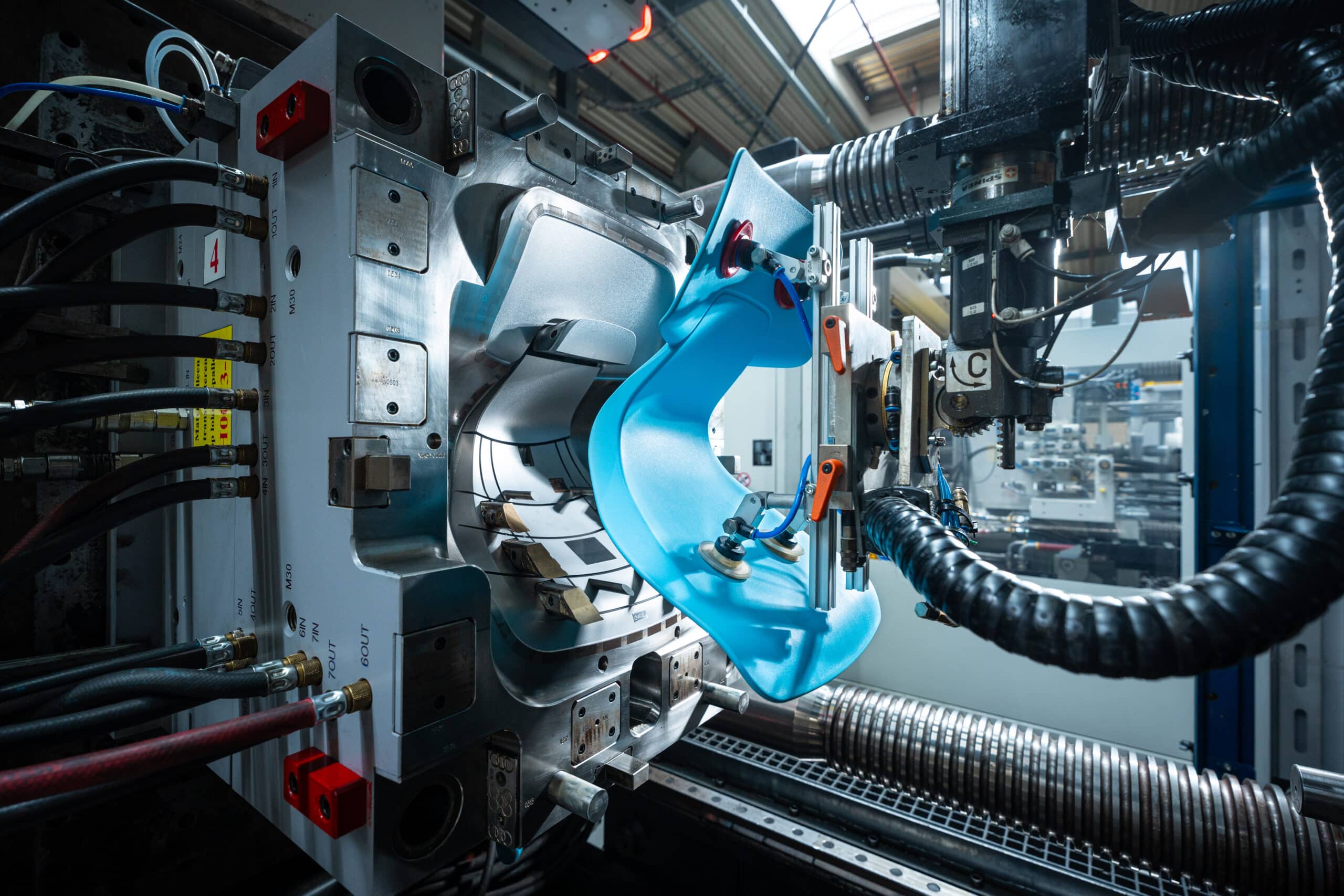
Circularity
At Timmerije, we believe in a circular future for plastic production. With over 90 years of experience, we combine craftsmanship and innovation to create products that are technically strong and contribute to a more sustainable world. Together with our chain partners, we help customers transition step by step to circular solutions, without compromising on quality or functionality. In this way, we are already contributing to the plastic products of tomorrow.
What is circular injection molding?
Circular injection molding is a production method in which plastics are reused repeatedly instead of being discarded or incinerated. It revolves around a closed loop in which materials are recovered, recycled, and reused. This greatly reduces dependence on fossil raw materials.
Whereas traditional injection molding focuses primarily on production efficiency and low costs with new plastics, circular injection molding takes a different approach. It revolves around smart design, the use of sustainable materials such as recycled or biobased plastics, and setting up processes that enable reuse. This creates a circular chain in which the focus is not only on the product, but on the entire process.
Circular injection molding in practice
At Timmerije, we translate circular principles into tangible and measurable results. We do this by intelligently designing products according to Design for Circularity (DFC) and Design for Disassembly (DFD) principles, ensuring they can be easily disassembled and materials can be optimally reused at the end of their life cycle. At the same time, we are continuously increasing the proportion of recycled plastics in our products, reducing our dependence on fossil raw materials and lowering our carbon footprint.
Cooperation within the chain is also essential: by actively collaborating with partners and knowledge institutes, we develop and implement innovative recycling techniques that accelerate the transition to circular plastic production. In addition, in-house recycling ensures that production scrap and residual materials are directly processed into reusable raw materials, minimizing waste and keeping material cycles within our processes closed.
By implementing these initiatives on a structural basis, we are taking major steps towards fully circular plastic production at Timmerije. Innovation, collaboration, and a clear focus on sustainability are at the heart of our approach. Our goal is to minimize our impact on the environment while creating value for our customers and society.
Impact of circular injection molding
Circular injection molding has a major impact on the plastics industry. Whereas traditional plastics production is often associated with high CO2 emissions, plastic pollution, and a growing mountain of waste, a circular approach offers the opportunity to significantly reduce these effects. By using materials more intelligently and closing cycles, the environmental impact is drastically reduced.
At the same time, circular injection molding reduces dependence on fossil raw materials, which are becoming increasingly scarce and expensive. In addition, European regulations such as CSRD and ESG require transparency on sustainability. For the industry, this means that circularity is no longer a choice, but a necessity.
Challenges of circular injection molding
Although circular injection molding offers many opportunities, the transition to fully circular plastic production is not without its challenges. The industry faces complex issues in the areas of material development, availability of high-quality recyclate, production processes, and regulations. Below, we list the most important challenges:
- Availability and quality of recycled materials
High-quality recycled material is still in limited supply. The current supply often fails to meet the strict requirements for mechanical properties such as strength, toughness, and color fastness. This makes it difficult to use recycled material for technical applications without compromising product quality. - Design and production
Circular product design requires a different approach than traditional development. Principles such as ‘Design for Circularity’ and ‘Design for Disassembly’ require in-depth knowledge and experience. Products must be designed in such a way that they can be easily disassembled and recycled. This necessitates collaboration with customers and partners. - Infrastructure and regulations
Setting up an efficient infrastructure for the collection, separation, and recycling of plastic waste is complex and costly. At the same time, current legislation and regulations do not yet provide sufficient incentives for companies to actively contribute to circularity. There is a need for clear product liability, whereby producers are responsible for the entire life cycle of their products.
From theory to practice
Circularity only becomes truly valuable when theory and practice come together. A good example of this is our collaboration with Royal Pas Reform and Q-plastics on the production of the Smart Tray 162: a plastic egg tray for incubators. In this project, we demonstrate how to set up a completely closed loop.
In the video below, we take you through this process and show you how partnership in the chain leads to a future-proof, sustainable solution: